In 2025, custom clothing has firmly established itself as one of the most profitable and future-proof niches in dropshipping. Unlike generic apparel, custom clothing allows consumers to express individuality, identity, and lifestyle—qualities that resonate strongly with today’s fashion-forward shoppers. Recent industry reports show that the global custom apparel market is growing at a steady CAGR of over 9%, with projections surpassing $6 billion by 2026. This growth is driven by younger generations, particularly Gen Z and Millennials, who are more likely to purchase personalized products that reflect their values and aesthetics.
For online sellers, the opportunity is twofold: you can charge premium prices for unique items and build a recognizable brand that customers trust. Custom t-shirts, hoodies, activewear, and eco-friendly fabrics are especially popular categories, with TikTok and Instagram trends pushing them into the spotlight. At the same time, customers increasingly expect faster delivery and higher quality, making supplier choice more critical than ever.
That’s where custom clothing dropshipping suppliers come in. The right partner can handle on-demand printing, branding, and shipping, while allowing you to focus on marketing and building your store. In this guide, we’ll explore the top suppliers for 2025 and what makes them the best fit for sellers aiming to build a sustainable clothing brand.
What to Look for in Custom Clothing Dropshipping Suppliers
The success of a custom clothing brand depends heavily on the suppliers you partner with. In dropshipping, you don’t control production directly, so your supplier becomes the backbone of your brand’s quality, reliability, and customer satisfaction. Here are the most important factors to consider when evaluating custom clothing dropshipping suppliers in 2025:
1. Diverse Customization Methods
Customers want more than basic prints. Leading suppliers should offer options such as direct-to-garment (DTG) printing, embroidery, sublimation, and even eco-friendly printing methods. With over 60% of Gen Z shoppers saying they prefer brands that allow self-expression, the ability to provide unique customization directly impacts your sales potential.
2. Seamless E-Commerce Integrations
Efficiency matters. Suppliers that integrate smoothly with platforms like WooCommerce, Shopify, and Etsy allow you to automate product imports, order fulfillment, and inventory updates. This not only saves time but also minimizes errors, ensuring a smoother experience for both you and your customers.
3. Fast and Reliable Fulfillment
Speed is a major driver of online shopping decisions. Studies show that 41% of consumers expect delivery within 2–3 days, and nearly half abandon carts if shipping times are too long. Choosing suppliers with warehouses in multiple regions, particularly the US and Europe, helps you meet these expectations and improve retention.
4. Branding and Value-Added Services
A plain t-shirt is just a product, but a t-shirt with custom tags, branded packaging, or eco-friendly wrapping becomes part of a brand story. Look for suppliers who offer private labeling, woven tags, branded invoices, or sustainable packaging options. These details elevate customer perception and increase repeat purchase rates.
5. Transparent Pricing and Healthy Margins
Custom apparel tends to have higher base costs than generic clothing. A good supplier should provide clear pricing, including production and shipping fees, so you can calculate margins confidently. Suppliers offering bulk discounts or tiered pricing help you scale profitably as your order volume grows.
6. Strong Customer Support
No matter how reliable a supplier is, issues like misprints, shipping delays, or stockouts can occur. Responsive customer support ensures these problems are resolved quickly, protecting your brand reputation. A supplier who treats communication seriously is a supplier you can trust long-term.
In short, the best suppliers are those who offer flexibility, automation, reliability, and branding options. By prioritizing these qualities, you can turn your clothing line into a recognized brand rather than just another online shop.
Top Custom Clothing Dropshipping Suppliers in 2025
The suppliers you choose will directly influence product quality, shipping speed, and customer satisfaction. In 2025, the best custom clothing dropshipping suppliers are those that combine reliable fulfillment with strong branding options and seamless e-commerce integrations. Below are the top providers worth considering.
1. CJdropshipping
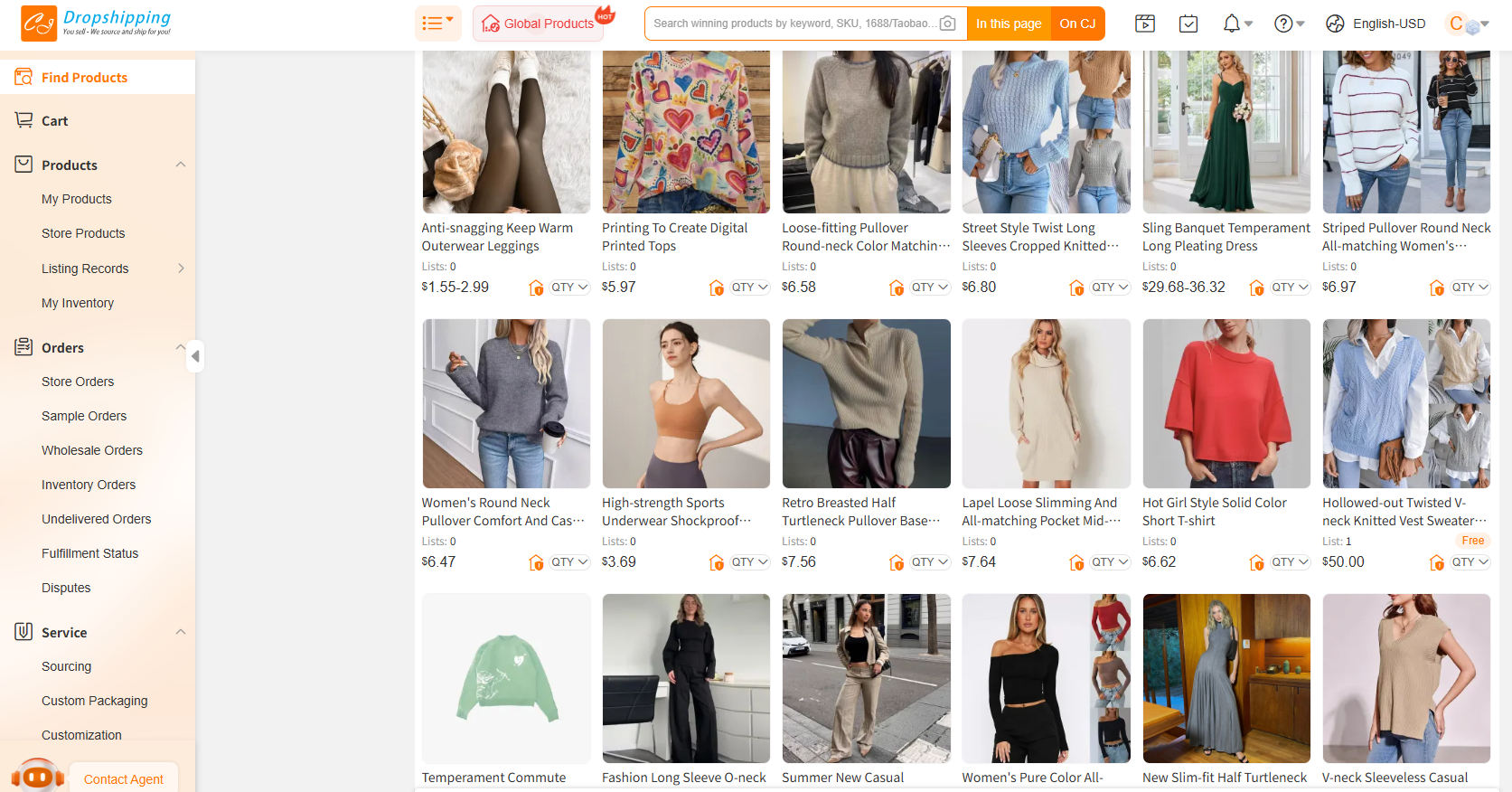
Overview:
CJdropshipping has grown into one of the most versatile dropshipping platforms, and its custom clothing solutions are especially attractive for brand builders. With a wide range of apparel products—from t-shirts and hoodies to hats and activewear—CJ allows sellers to add unique designs through print-on-demand (POD) and embroidery services. Its dedicated WooCommerce and Shopify plugins make it easy to automate product imports, order syncing, and real-time inventory updates.
Strengths:
-
Large catalog of customizable clothing products.
-
Global warehouses in the US, Europe, and Asia, reducing delivery times.
-
POD services including DTG printing, embroidery, and private labeling.
-
Branding support with custom packaging, woven tags, and logo labeling.
-
Multiple payment methods make it easier for international sellers.
Limitations:
-
Some private-labeling and advanced branding services require minimum order quantities (MOQs).
-
Product quality varies across suppliers—samples are recommended.
Best For:
Entrepreneurs who want an all-in-one dropshipping partner to build a scalable, branded custom clothing line.
2. Printful
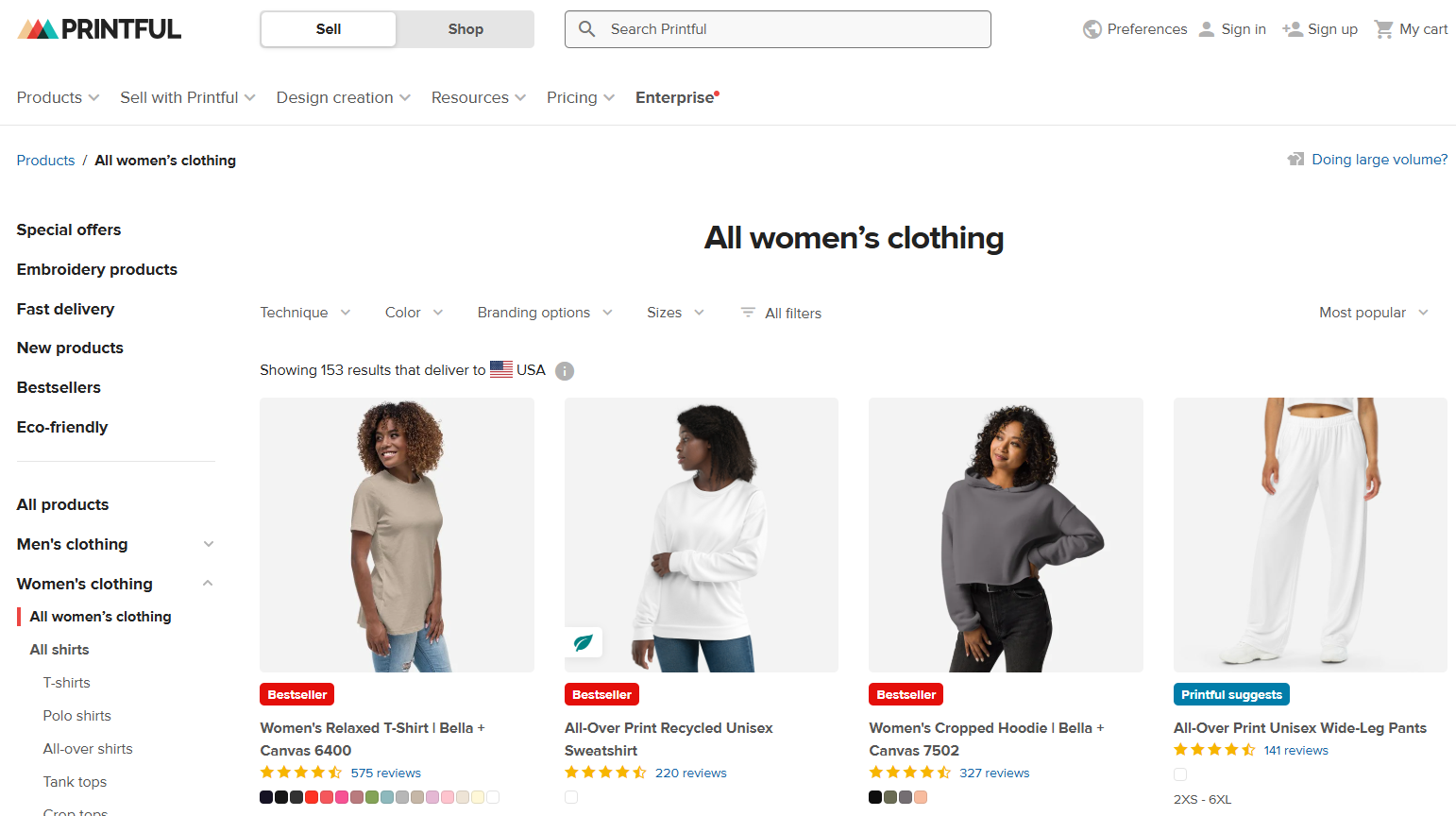
Overview:
Printful is one of the leading POD suppliers worldwide, offering premium-quality apparel and global fulfillment coverage.
Strengths:
-
Wide variety of apparel and accessories.
-
High-quality printing with DTG, embroidery, and sublimation options.
-
Fulfillment centers across North America, Europe, and Asia.
-
Strong integrations with major platforms, including WooCommerce and Shopify.
Limitations:
-
Higher base product costs reduce profit margins.
-
Works best with premium positioning rather than discount-focused brands.
Best For:
Brands looking for premium custom clothing with reliable quality and global reach.
3. Printify

Overview:
Printify connects sellers to a large network of printing providers, offering flexibility in cost, fulfillment, and product variety.
Strengths:
-
Over 500 apparel and accessory products.
-
Competitive pricing due to multiple print providers.
-
User-friendly design tools.
-
Integrates with WooCommerce, Shopify, and Etsy.
Limitations:
-
Print quality and shipping times vary by provider.
-
Less centralized control compared to Printful.
Best For:
Sellers who want flexible, affordable POD clothing options while testing different products.
4. Spocket
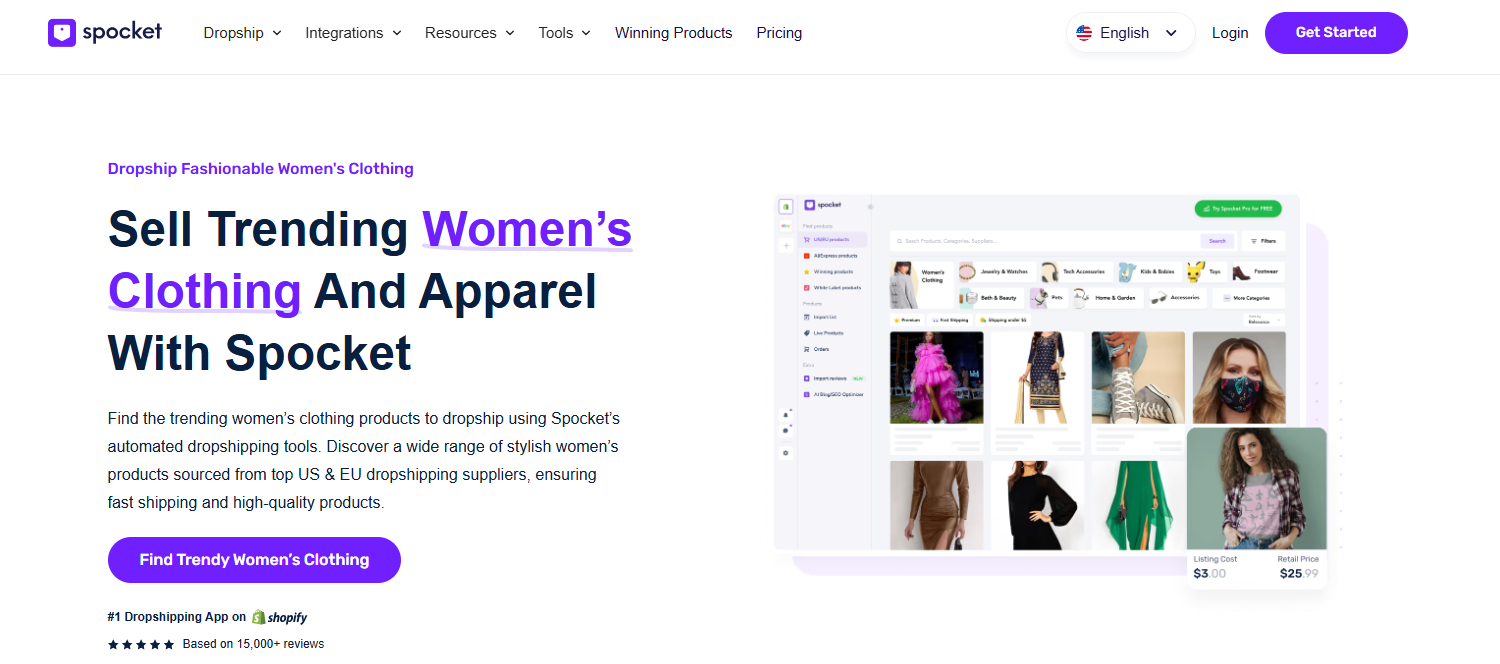
Overview:
Spocket specializes in connecting merchants with US and European suppliers, ensuring quicker fulfillment for custom apparel.
Strengths:
-
Fast delivery (average 2–7 days) for local orders.
-
Branded invoicing available.
-
Smooth WooCommerce and Shopify integration.
Limitations:
-
Smaller catalog of apparel than dedicated POD suppliers.
-
Higher costs than overseas suppliers.
Best For:
Sellers focused on Western markets where fast delivery and trust matter most.
5. Syncee
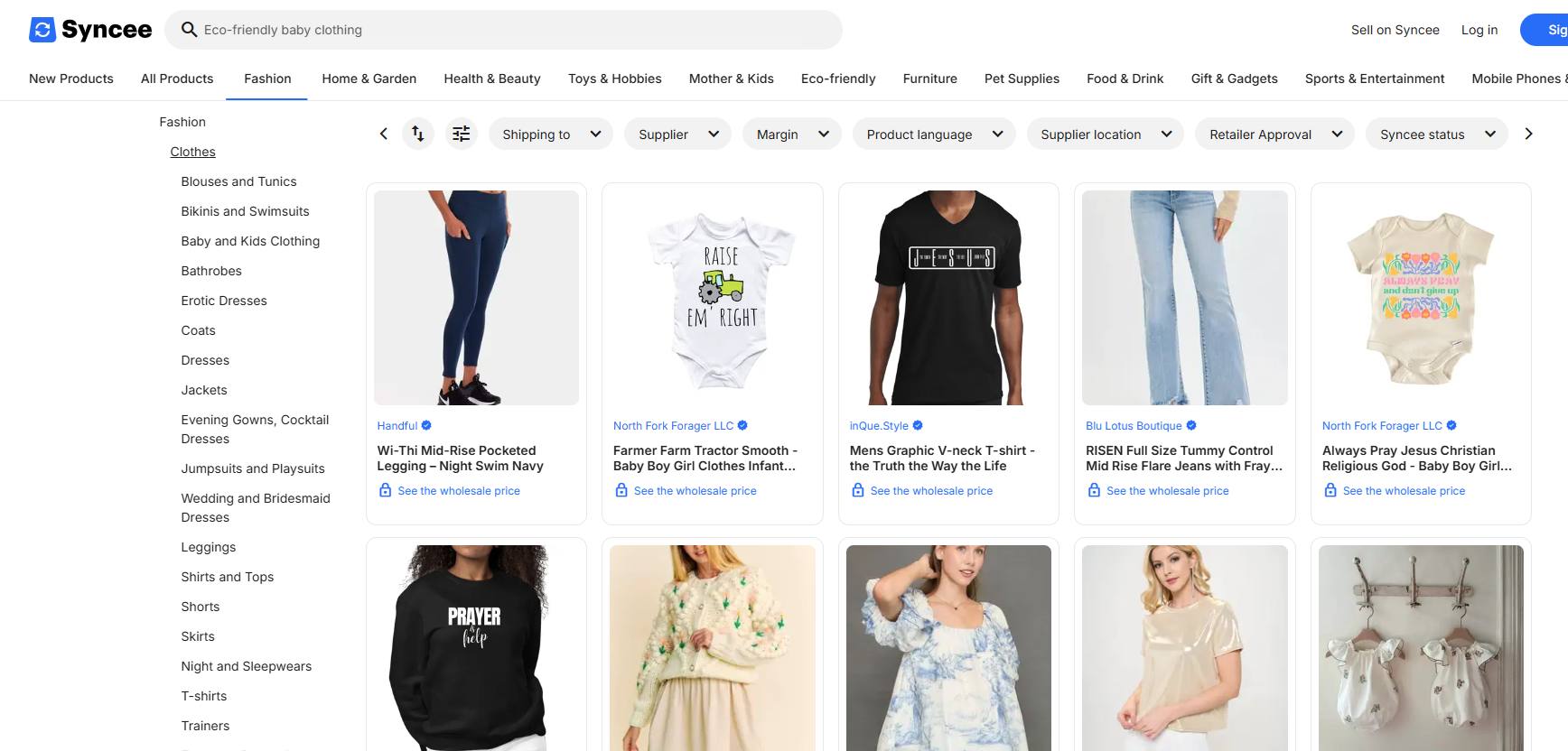
Overview:
Syncee is a supplier marketplace with verified vendors worldwide, including custom clothing providers.
Strengths:
-
Access to vetted global suppliers.
-
Automated product syncing, pricing updates, and order processing.
-
Works with WooCommerce, Shopify, and BigCommerce.
Limitations:
-
Subscription fee required.
-
Catalog breadth depends on supplier availability.
Best For:
Entrepreneurs who want automation and variety in their custom apparel offerings.
6. Apliiq
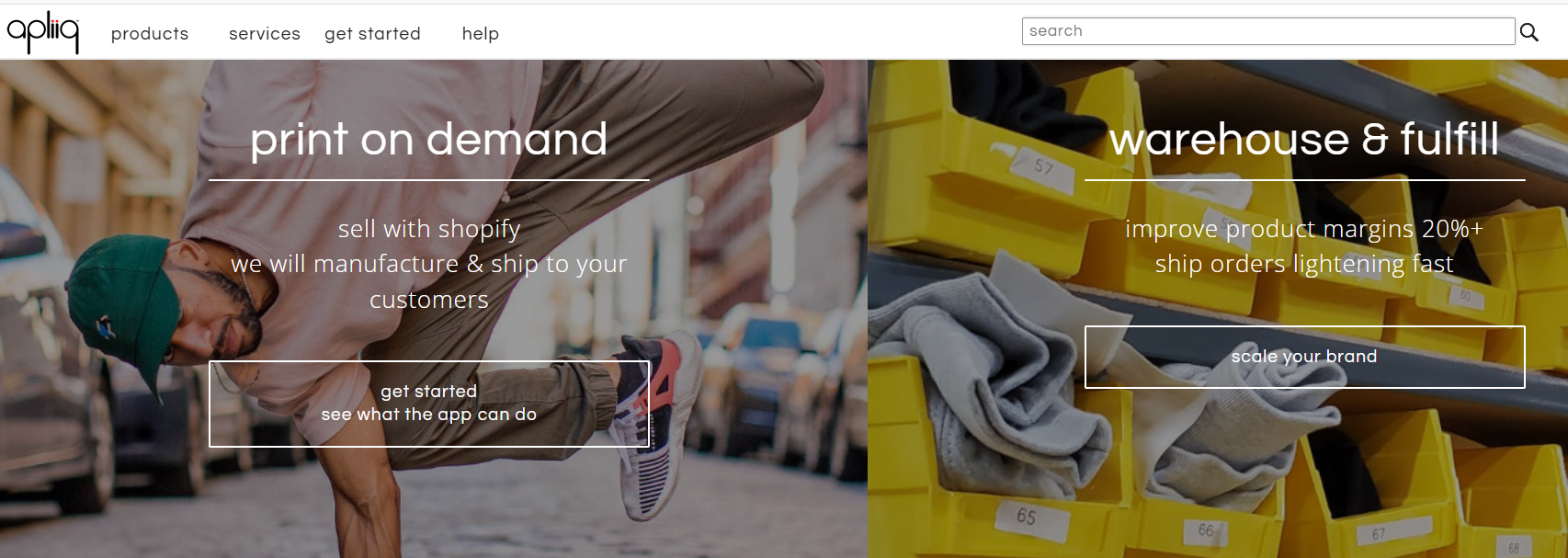
Overview:
Apliiq is a POD supplier focused on fashion-forward custom branding, ideal for boutique and streetwear labels.
Strengths:
-
Unique branding features such as woven labels and embroidered patches.
-
Streetwear-oriented product catalog.
-
Private-label options for creating retail-ready clothing.
Limitations:
-
Premium services increase costs.
-
Smaller catalog compared to larger POD platforms.
Best For:
Sellers is building a premium clothing brand with a strong emphasis on identity and design.
7. T-Pop

Overview:
T-Pop is a European POD supplier that puts sustainability at the core of its business model.
Strengths:
-
Eco-friendly packaging and carbon-neutral operations.
-
Strong alignment with conscious consumer trends.
-
Direct integration with Shopify, WooCommerce, and Etsy.
Limitations:
-
Best for Europe; international shipping is slower and costlier.
-
Narrower product range compared to larger competitors.
Best For:
Eco-conscious brands aiming to sell sustainable custom clothing in European markets.
8. Gelato
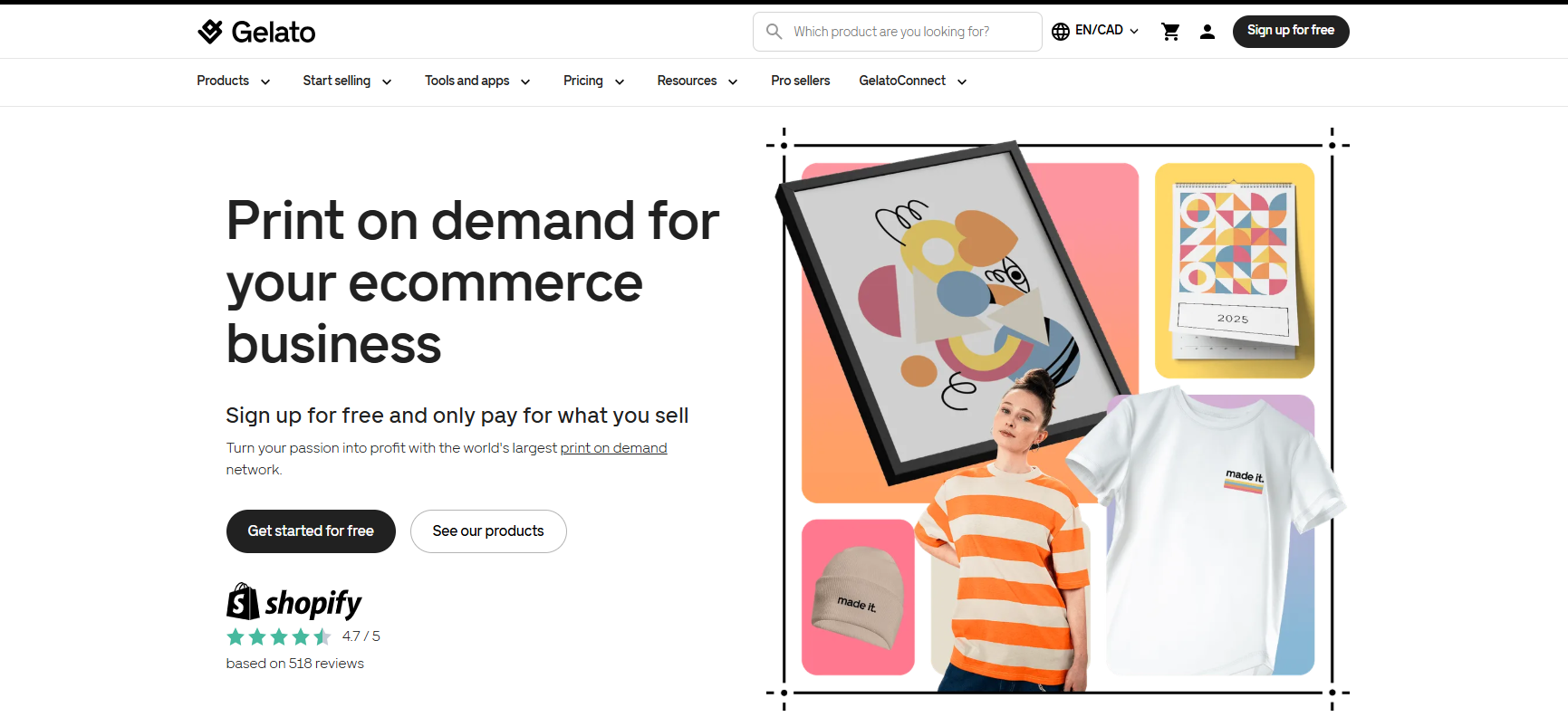
Overview:
Gelato is a global POD solution with production partners in 30+ countries, reducing cross-border logistics challenges.
Strengths:
-
Localized production for faster delivery worldwide.
-
Wide catalog covering apparel, accessories, and home décor.
-
Good integrations with WooCommerce, Shopify, and Etsy.
Limitations:
-
Base pricing varies by region.
-
Less specialized in apparel than Printful or Apliiq.
Best For:
Brands targeting global audiences that value speed and convenience.
9. Teespring (Spring)
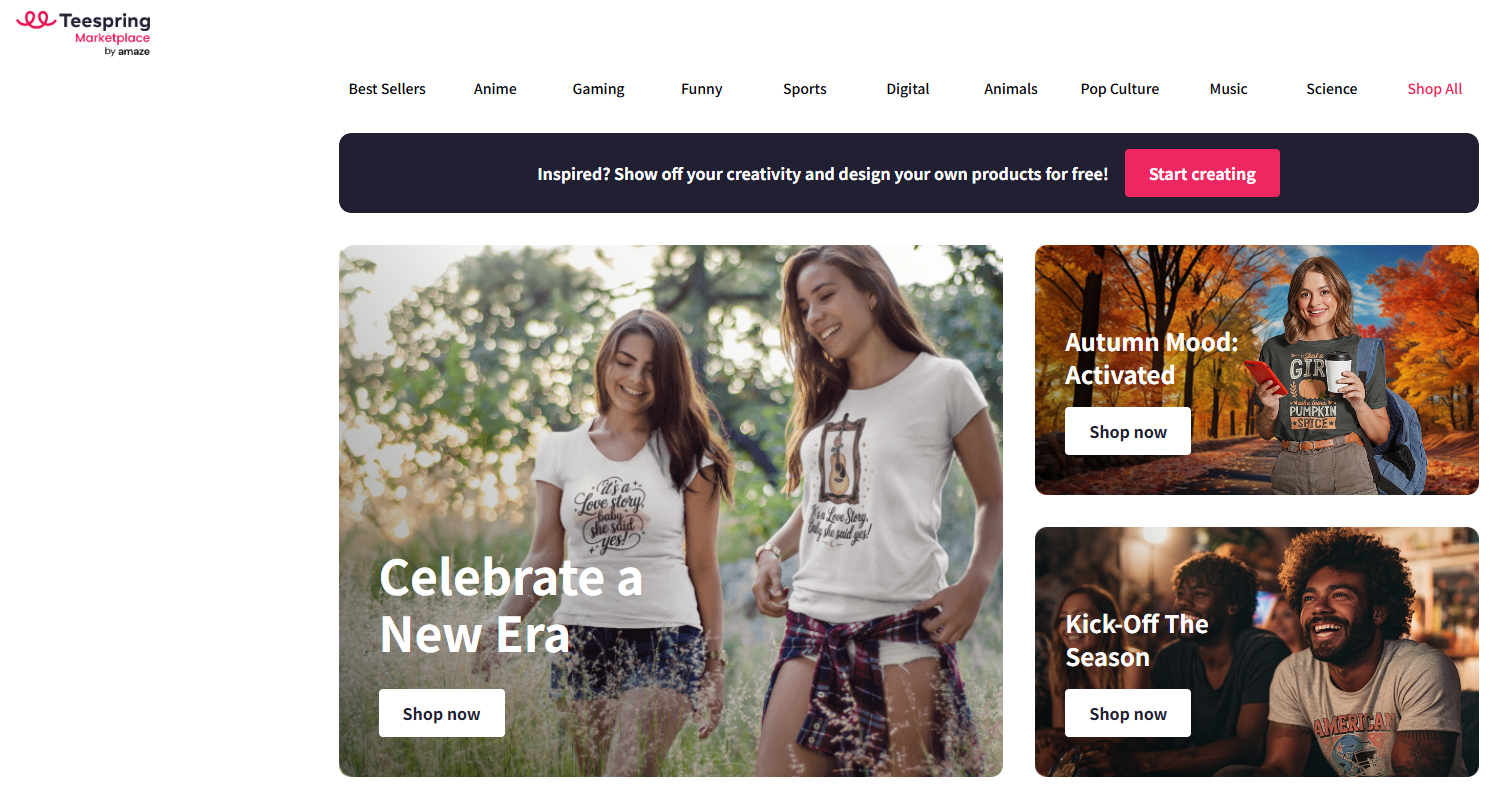
Overview:
Spring (formerly Teespring) focuses on helping creators monetize via POD, with direct integrations to social platforms.
Strengths:
-
Sales channels through YouTube, TikTok, and Instagram Shops.
-
No upfront costs for launching products.
-
Simple product creation process.
Limitations:
-
Limited branding options compared to premium suppliers.
-
Narrower apparel catalog.
Best For:
Content creators who want to sell branded clothing directly to their audiences.
10. Modalyst
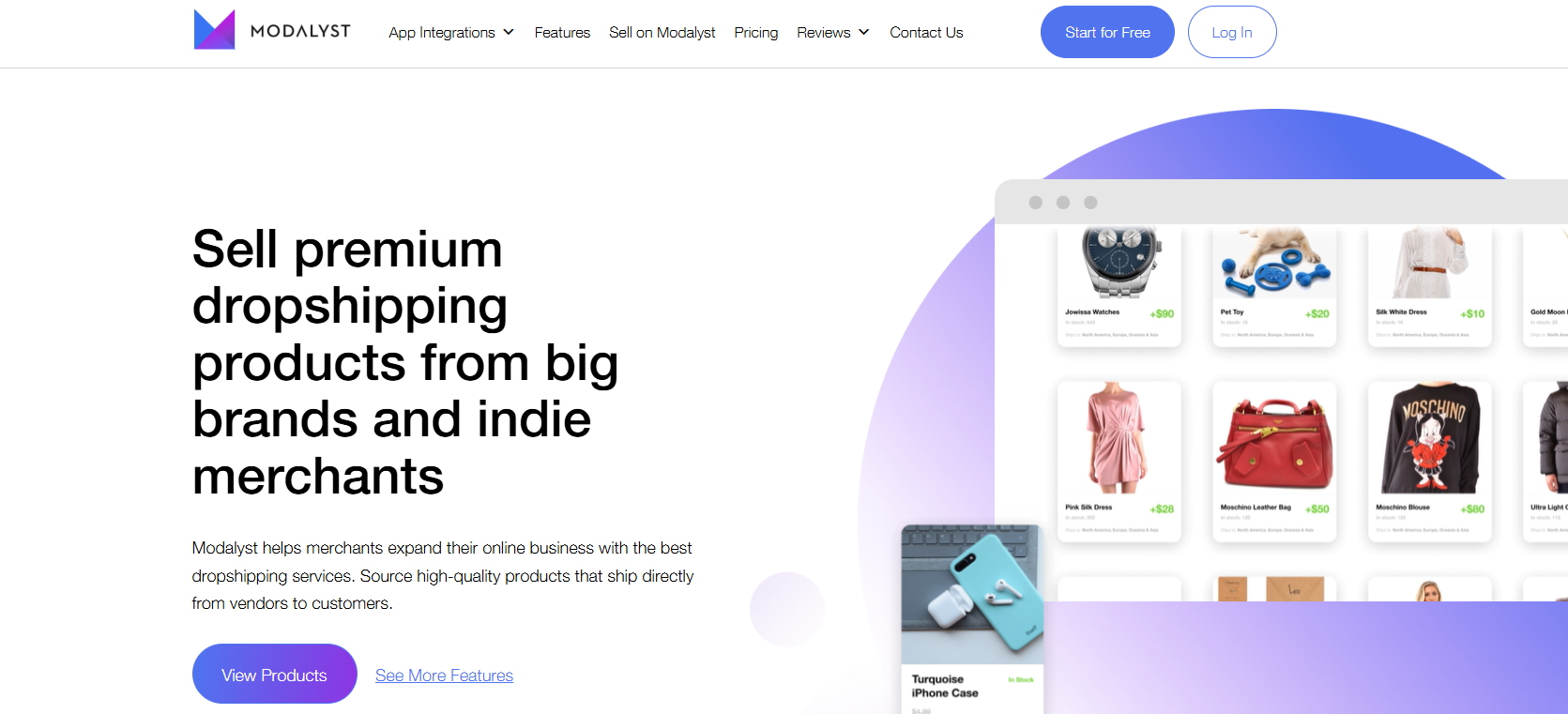
Overview:
Modalyst connects sellers with independent brands and boutique suppliers, offering unique apparel collections.
Strengths:
-
Curated product catalog with boutique apparel.
-
Automated inventory syncing and order forwarding.
-
Integrations with WooCommerce, Shopify, and Wix.
Limitations:
-
Higher costs for boutique items.
-
Limited customization depending on the supplier.
Best For:
Sellers looking to combine boutique or luxury fashion with custom clothing offerings.
How to Integrate Custom Clothing Suppliers With Your Store
One of the biggest advantages of running a custom clothing dropshipping business in 2025 is the range of tools available for smooth integration. Whether you’re using WooCommerce, Shopify, Etsy, or another platform, most leading suppliers now offer direct plugins or apps that connect your store to their fulfillment systems. This integration is what allows you to scale efficiently without drowning in manual tasks.
1. Use Official Plugins or Apps
Suppliers like Printful, Printify, Gelato, and CJdropshipping provide official plugins for WooCommerce and Shopify. These tools let you import products with a single click, sync product details automatically, and forward customer orders directly to the supplier. For creators using Spring, social platform integrations (YouTube, TikTok, Instagram) work as built-in sales channels.
2. Automate Inventory and Pricing Updates
Manually updating stock levels or price changes is time-consuming and prone to errors. A strong integration ensures your store reflects real-time supplier updates—so if a hoodie runs out of stock or the base price increases, your listings adjust automatically. This prevents overselling and helps protect your profit margins.
3. Enable Seamless Order Fulfillment
When integration is set up properly, every order placed in your store is instantly sent to your supplier for production and shipping. You won’t need to re-enter customer information, reducing fulfillment delays and human error. Tracking numbers are also automatically added to customer accounts, which improves transparency and builds trust.
4. Customize Shipping Rules
Most suppliers let you configure shipping methods within their dashboard or directly in your store. You can set delivery zones, offer tiered shipping rates, or even provide free shipping thresholds to boost conversions. For suppliers with regional warehouses, it’s smart to assign the closest fulfillment center to your key markets to minimize shipping times.
5. Test Before You Scale
Even the best plugins can have quirks. Before going live, run a few test orders to confirm that designs are printing correctly, inventory is syncing, and shipping options appear as intended. Catching small errors early will save you from customer complaints once orders start to increase.
In short: Integration is about creating a system where your store, supplier, and customers are always in sync. By choosing suppliers with reliable plugins and taking the time to test, you’ll set up a smooth workflow that allows you to focus on growing your brand instead of fixing fulfillment issues.
Tips for Building a Profitable Custom Clothing Brand With Dropshipping
Launching a custom clothing line through dropshipping isn’t just about uploading designs to products—it’s about turning those products into a recognizable brand that resonates with your target audience. Here are some practical tips to help you stand out and build a profitable business.
1. Define Your Niche and Target Audience
The custom clothing market is crowded. Instead of trying to appeal to everyone, focus on a niche—streetwear for Gen Z, sustainable basics for eco-conscious buyers, or activewear for fitness enthusiasts. Research shows that brands targeting a clear niche enjoy 30–40% higher customer loyalty than generalist stores.
2. Prioritize Quality and Samples
Your designs might attract customers, but quality keeps them coming back. Always order samples from suppliers to check fabric durability, printing accuracy, and sizing consistency. A well-made hoodie or t-shirt not only reduces return rates but also builds trust in your brand.
3. Invest in Branding
Custom clothing isn’t only about the print—it’s about the experience. Suppliers that offer private labeling, branded packaging, and woven tags give your products a professional finish. Small touches like eco-friendly wrapping or thank-you cards can increase repeat purchases by up to 25%.
4. Leverage Social Media and Influencers
Platforms like TikTok, Instagram, and YouTube are powerful marketing channels for clothing brands. Short-form video content showcasing lifestyle shots, behind-the-scenes design stories, or influencer collaborations can drive virality. Partnering with micro-influencers is especially effective—studies show they generate engagement rates up to 60% higher than larger influencers.
5. Optimize Pricing and Profit Margins
Since custom clothing has higher base costs than generic apparel, your pricing strategy is crucial. Consider tiered pricing (basic, premium, limited edition) to appeal to different budgets. Bundle deals—like offering a hoodie and t-shirt combo—can also raise average order value without raising acquisition costs.
6. Offer Great Customer Experience
Fast fulfillment, transparent shipping updates, and responsive support can turn a one-time buyer into a loyal fan. Automating order tracking and including clear return policies reduces friction. In fashion, reputation spreads quickly—positive experiences fuel word-of-mouth marketing.
7. Test, Analyze, and Scale
Treat your first designs as experiments. Track best-sellers, monitor customer feedback, and use analytics to refine your catalog. Once you identify winning products, double down with targeted ads or expand the line with variations (new colors, premium fabrics, seasonal drops).
In short: Profitability in custom clothing dropshipping comes from more than designs—it’s the combination of niche focus, strong branding, and customer experience that builds a sustainable business. When you align these elements, you’re not just selling clothing—you’re building a brand people connect with.
Final Thoughts: Building Your Clothing Brand in 2025
The custom clothing industry is no longer just about novelty t-shirts—it’s an evolving market driven by personalization, sustainability, and brand storytelling. In 2025, consumers expect more: faster delivery, better quality, and clothing that reflects their identity. That means success in dropshipping isn’t only about choosing designs, but about choosing the right partners and strategies to support your vision.
The suppliers you work with play a central role in this journey. Reliable custom clothing dropshipping suppliers provide more than fulfillment—they give you the tools to automate your store, scale internationally, and add brand-focused details like private labeling or eco-friendly packaging. When combined with a clear niche, strong branding, and smart marketing, they become the backbone of a sustainable fashion business.
Whether you’re building a streetwear line, eco-conscious basics, or creator-led merch, the formula is the same:
-
Pick suppliers that align with your goals.
-
Focus on quality and branding to stand out.
-
Deliver consistently excellent experiences to your customers.
Dropshipping custom clothing in 2025 is a competitive field, but it’s also one of the most rewarding. With the right supplier partnerships and a brand-first mindset, your store can grow beyond selling apparel—it can become a label that customers are proud to wear and share.
